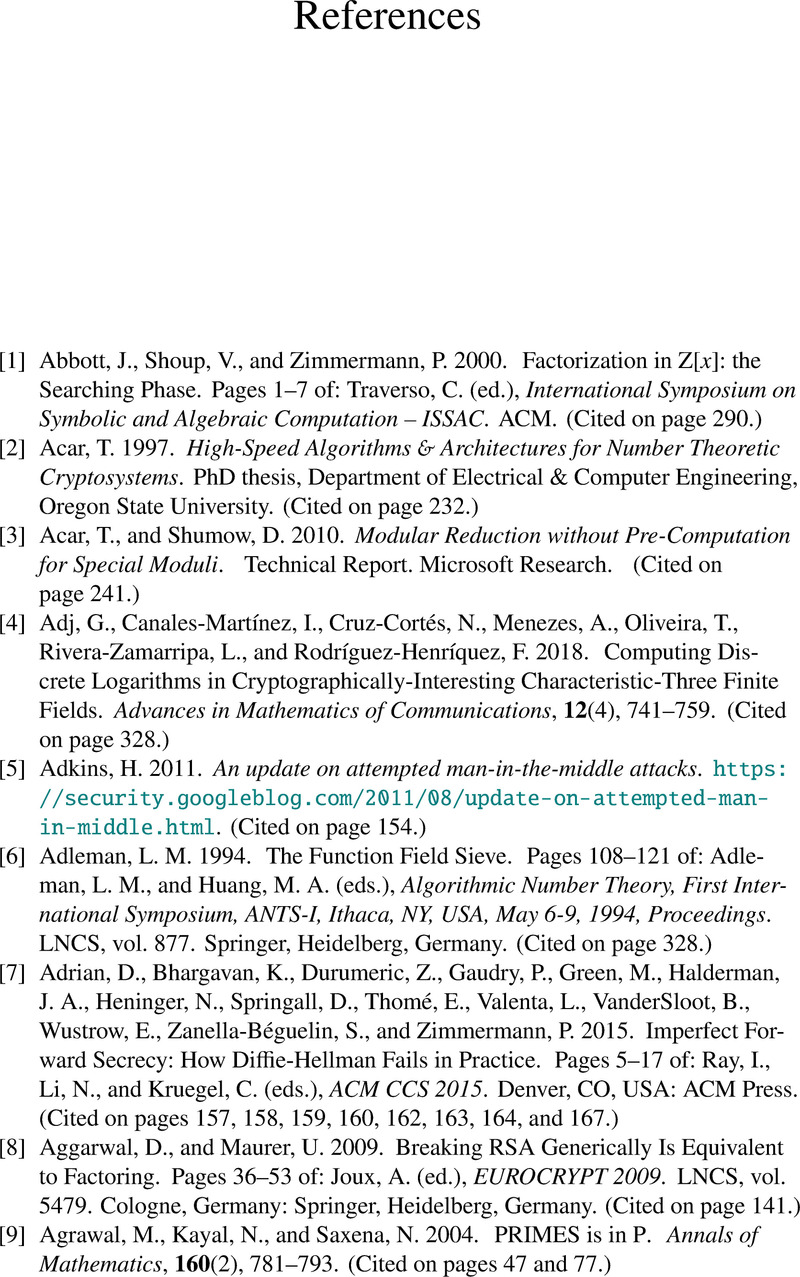References
Published online by Cambridge University Press: 11 November 2021
Summary

- Type
- Chapter
- Information
- Computational CryptographyAlgorithmic Aspects of Cryptology, pp. 335 - 382Publisher: Cambridge University PressPrint publication year: 2021

